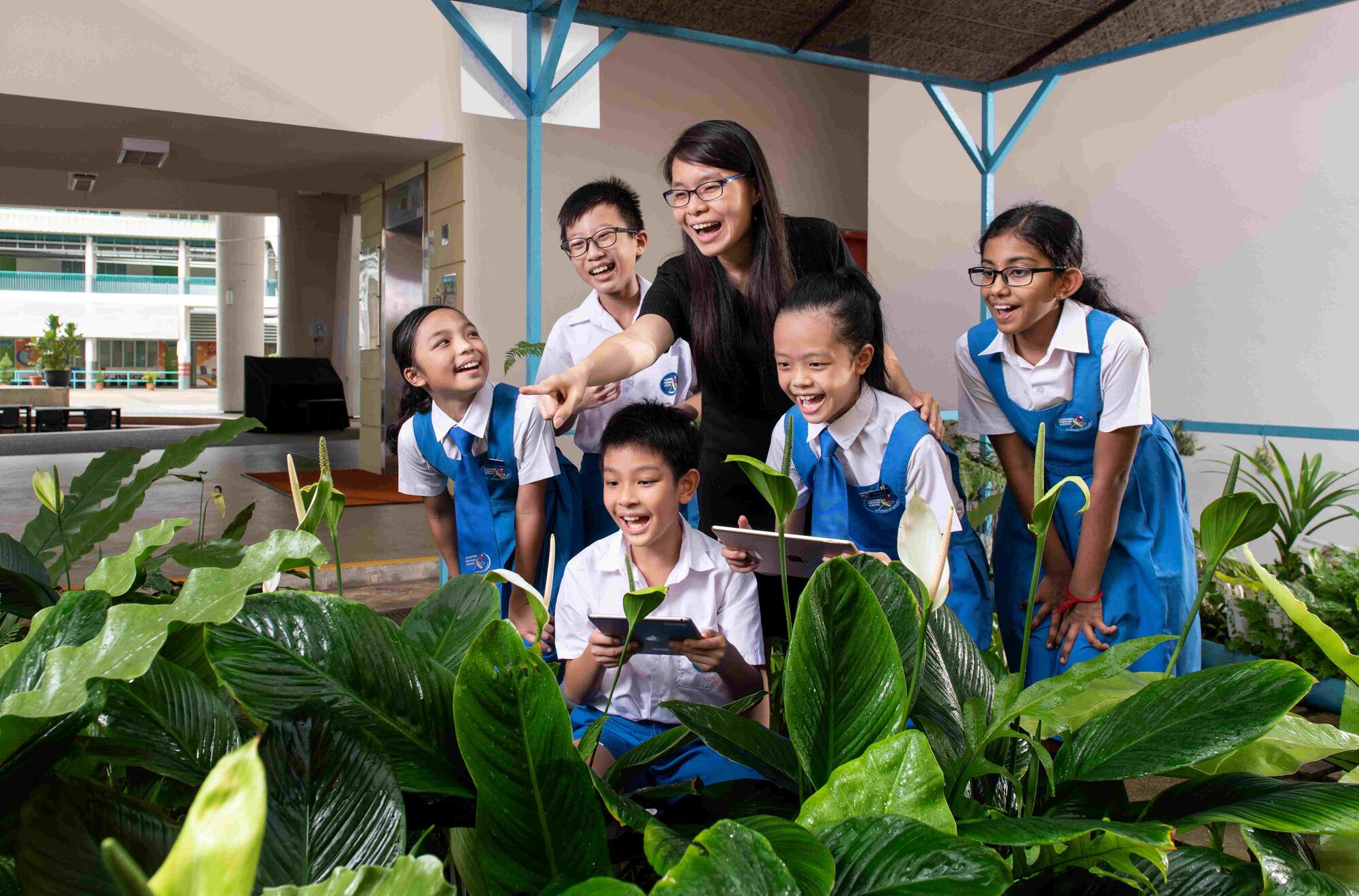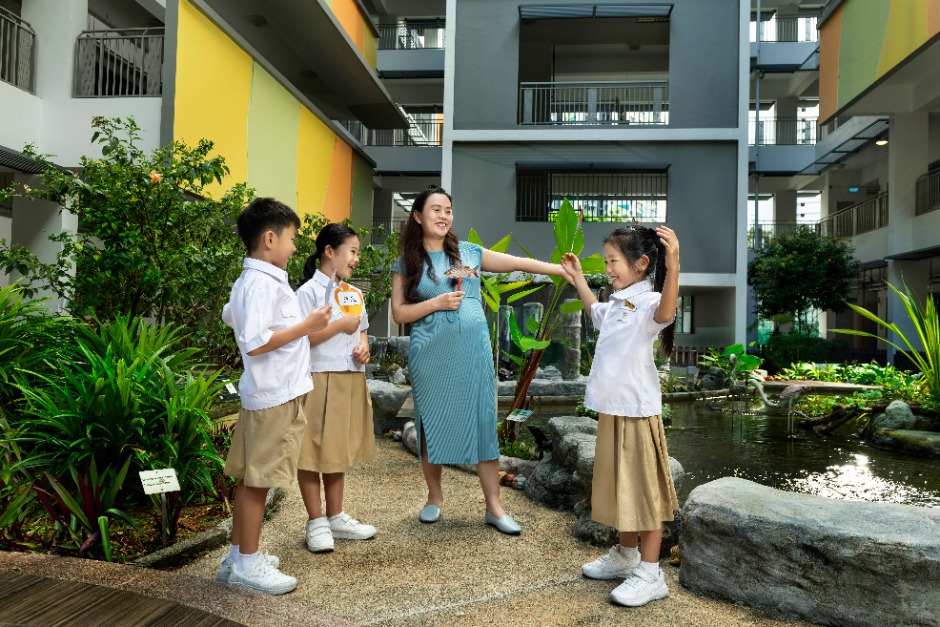‘Sparkling’ a love of science in primary school
21 Mar 2022
MOE and Science Centre Singapore teamed up to do what they do best: Make science fun! The result: A hands-on kit for Primary school students called ‘SPARKLE’ – Science Pack Activity Resource Kits for Learning. Find out how teachers bring SPARKLE into their classrooms, to catalyse conversations around science.
How do science concepts come alive in school for your primary school child? When teachers encourage them to think and talk about science, using a host of activities filled with hands-on materials.
The latest fun resource that has students excited is called SPARKLE, which stands for Science Pack Activity Resource Kits for Learning.
Developed by the Ministry of Education (MOE) and Science Centre Singapore, the kits encourage students to explore and test their science ideas through lots of “hands-on, minds-on” activities accompanied with questions and discussion.

Examples of SPARKLE to support students’ learning of diversity and cycles of living things.
We caught up with the teachers at Jiemin Primary School and East Spring Primary School to see how the activities encourage thinking and cultivate joy in learning.
Games to explore life-cycle concepts
Ms Elga Tan and Ms Sherly Lim, teachers from Jiemin Primary School, made use of the SPARKLE kit ‘Cycle of Life’ to engage Primary 4 students in constructing and comparing life cycles of animals. At the sight of the magnetic whiteboards and discs, students became noticeably excited observing the magnetic discs with images of animals in the different stages of their life cycles. Arrows were then added to let students assemble the correct sequence of the animals’ developmental stages.

Constructing and comparing life cycles using magnetic whiteboard and discs.
In the process, students also discussed the similarities and differences between life cycles of various animals. To further engage students in understanding and appreciating the topic, teachers posed various questions to help them consolidate what they have learnt: “Do life cycles start with an egg stage?” “Which of the young animals look like the adult animals?” “How does changing the directions of arrows affect the life cycles?”
When asked for their thoughts on playing with SPARKLE, Primary 4 student Teo Zi Qi said, “The kits were really fun to play with! I was very excited to construct the different life cycles of animals on the magnetic whiteboards.”
Another Primary 4 student, Arvind Prajna, added, “Since we worked in pairs, I was able to hear a different opinion from my friend. In the process, both of us gained more ideas from each other.”
Classification game to learn animal characteristics
At East Spring Primary School, Ms Nur Huda, a Primary 3 Science teacher, used the SPARKLE kit ‘Let’s Explore Living Things’ to support her students in learning about animal groups. Students were excited to receive the classification cards, which depicted coloured pictures of different animals and interesting information about them. They sprang into action to observe and compare the animals’ characteristics.
Throughout the discussion, students noticed that animals in the same group share common characteristics but also have some differences. For example, when observing the characteristics of a penguins and a chicken, a student remarked, “Both animals have wings. But while penguins are unable to fly, chickens can do so.”

Questioning and discussing similarities and differences about animals.
In addition, students also had the opportunity to play an “Animal Classification” game. In groups of four, students asked questions and collected animals which belong to the same group. For instance, a student looking for a bird posed questions such as “Do you have a card with an animal that can fly?”
Students also reflected on how they can sharpen their questioning, as the question on ‘animal which can fly’ may have resulted in them receiving cards that featured insects instead of birds.
In addition, students also had the opportunity to play an “Animal Classification” game. In groups of four, students asked questions and collected animals which belong to the same group. For instance, a student looking for a bird posed questions such as “Do you have a card with an animal that can fly?”
Students also reflected on how they can sharpen their questioning, as the question on ‘animal which can fly’ may have resulted in them receiving cards that featured insects instead of birds.
 Grouping animals using animal classification cards.
Grouping animals using animal classification cards.
As the activity progressed, students started to ask more specific questions such as “Do you have an animal with feathers?” Ms Huda was heartened to see students taking ownership of their learning as they helped each other to refine their questions. This enabled the students to gain a better understanding of the characteristics of different animal groups.
When asked for their thoughts on the lesson, Primary 3 student Muhd Tasleem said, “It was very fun asking my friends questions so that they would give me the correct cards I needed! While I initially thought that animals in the same animal group would only have similarities, I learnt today that they also have their differences.”
Classmate Annur Raudhah, chimed in enthusiastically: “Before the lesson, I always thought that snakes were amphibians! Now, I’ve learnt that snakes are reptiles because of their outer covering.”
Nothing beats seeing students intrigued and eager to learn. SPARKLE has supported the teaching and learning of science – with students enjoying, understanding and appreciating the world around them!




.jpg)
.jpg)